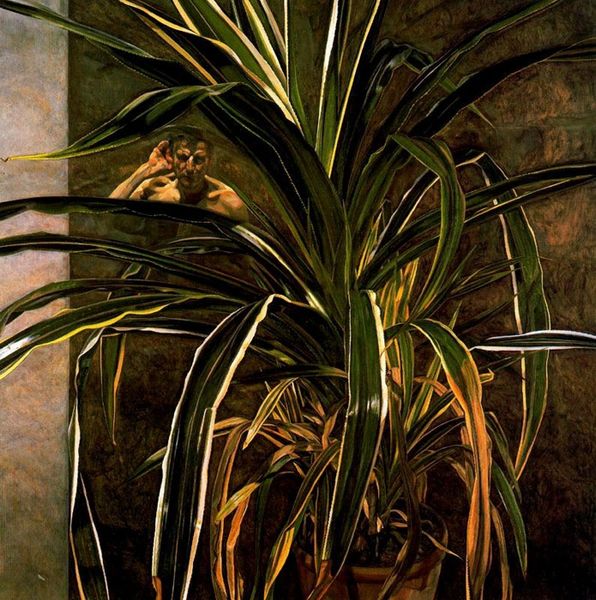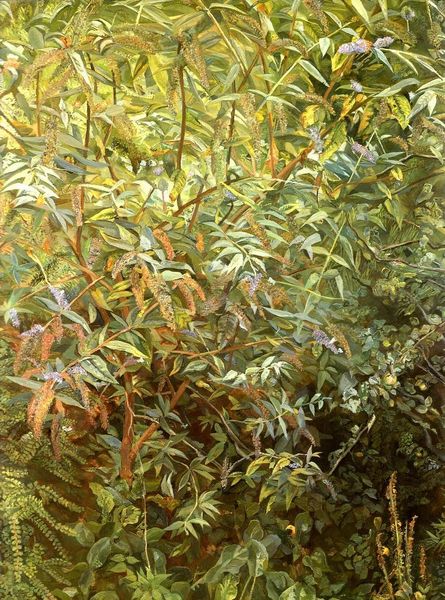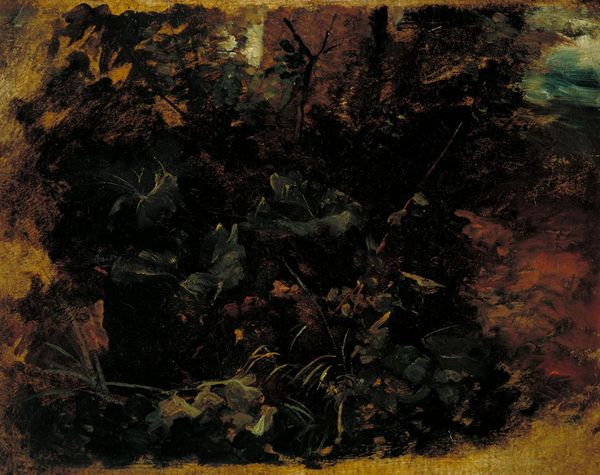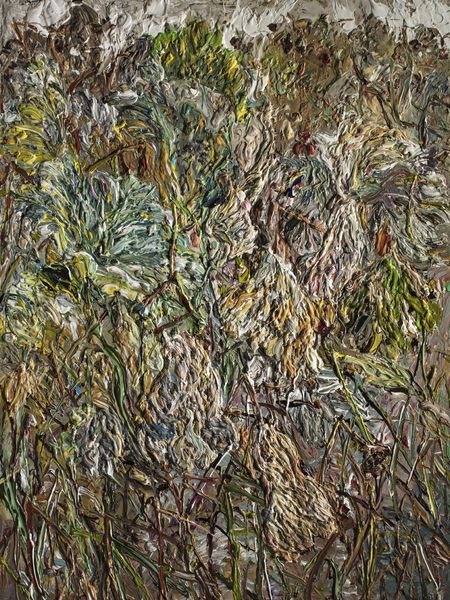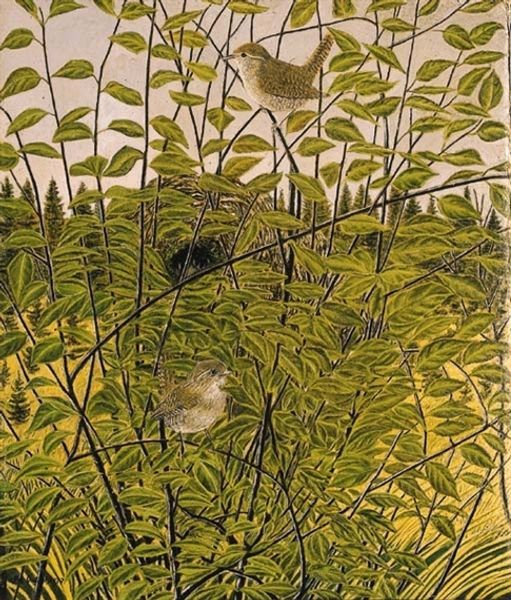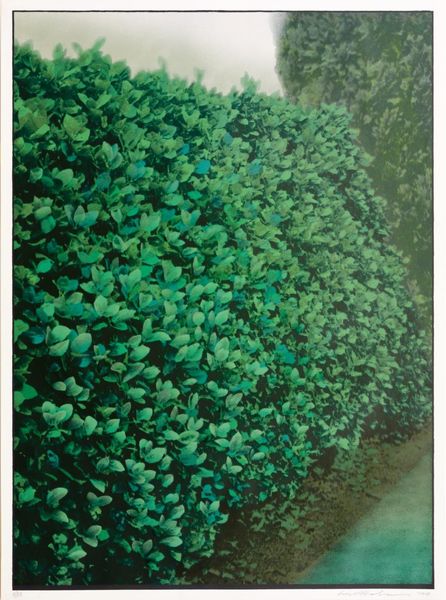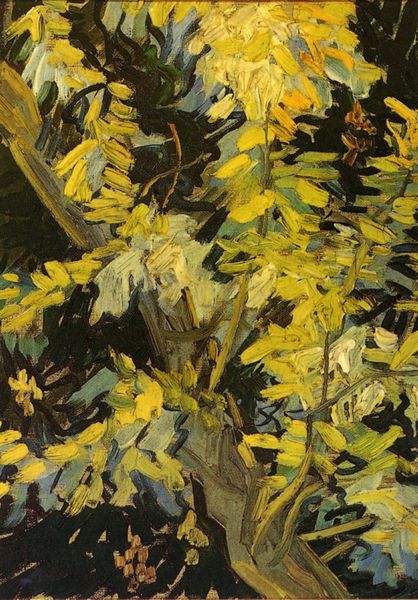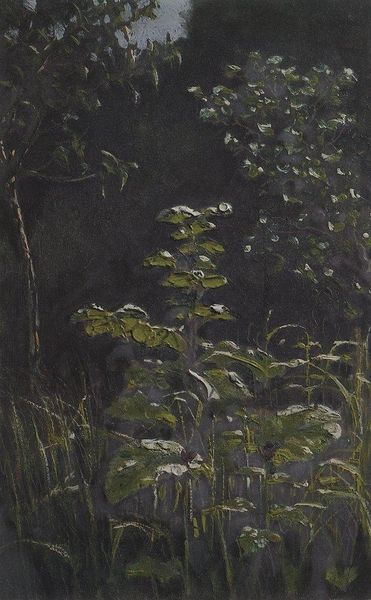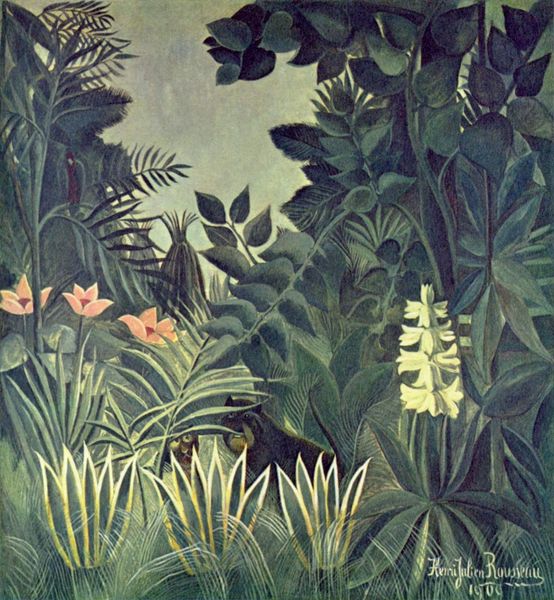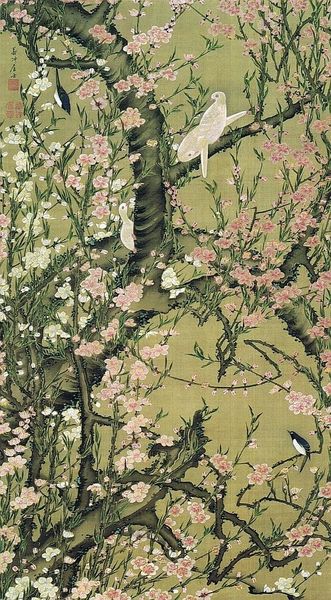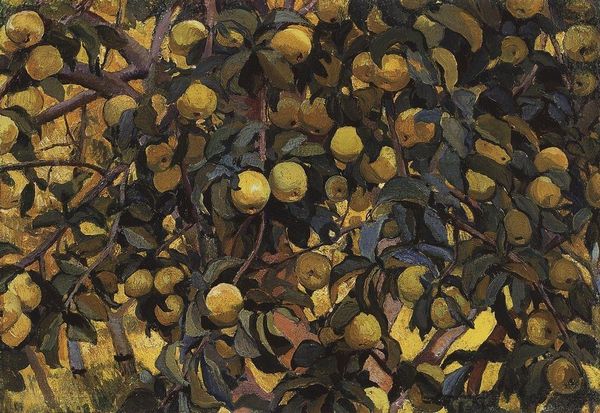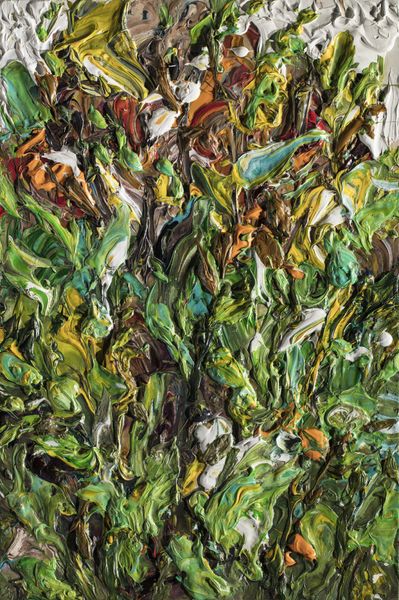
painting, oil-paint
#
painting
#
oil-paint
#
landscape
#
leaf
#
plant
#
realism
Copyright: Lucian Freud,Fair Use
Curator: Welcome. Before us is Lucian Freud’s “Two Plants,” rendered in oil paint in 1980. Editor: I'm struck immediately by the tension in the composition. The delicate upper foliage contrasting sharply with the bolder, almost aggressively rendered leaves below. Curator: Indeed. Note how Freud has eschewed idealized botanical depiction, focusing instead on a close examination of each leaf’s individual form, color, and texture. The visual language conveys almost hyper-realism. Editor: But the texture speaks of its own labor! Consider Freud's specific brushstrokes here, almost sculpting the surface with the oil paint to render what must have been the arduous work of seeing and painting such detailed tangles of leaves. What are the literal physical costs for such detailed paintings, one might ask. Curator: Certainly. While his realist style conveys the density and tactile presence of nature, it simultaneously subverts notions of the pastoral. Where would you place such naturalism in art history? Editor: A relevant question. Looking at the earthy tones, one might initially mistake it for academic landscape art. And the plants are front and center rather than relegated to scenery in the background. You see labor elevating these supposedly simple, ordinary specimens and offering them up as fine art. Curator: Observe Freud’s masterful manipulation of light and shadow. Each plant is revealed as an isolated form as it interacts in concert with other forms within the pictorial space, thus presenting us an evocative tableau. The very act of seeing and painting this reality becomes a philosophical proposition of reality versus representation. Editor: Though it evokes some connection with place, its materials—canvas and oil paint—were of his moment, and his method reveals a contemporary social dimension through an intense and exhausting approach, setting him apart from merely traditional craft. What value then does that bring in looking at plants as portrait subjects? Curator: The work suggests the complexities inherent in perception, and the impossibility of any single, objective rendering of reality. Editor: I see these two mundane plants becoming elevated through hours upon hours of invested care and effort. Curator: Ultimately, “Two Plants” challenges viewers to reconsider how they observe the world around them. Editor: It underscores the value in carefully and intentionally looking at that which we often deem common.
Comments
No comments
Be the first to comment and join the conversation on the ultimate creative platform.
